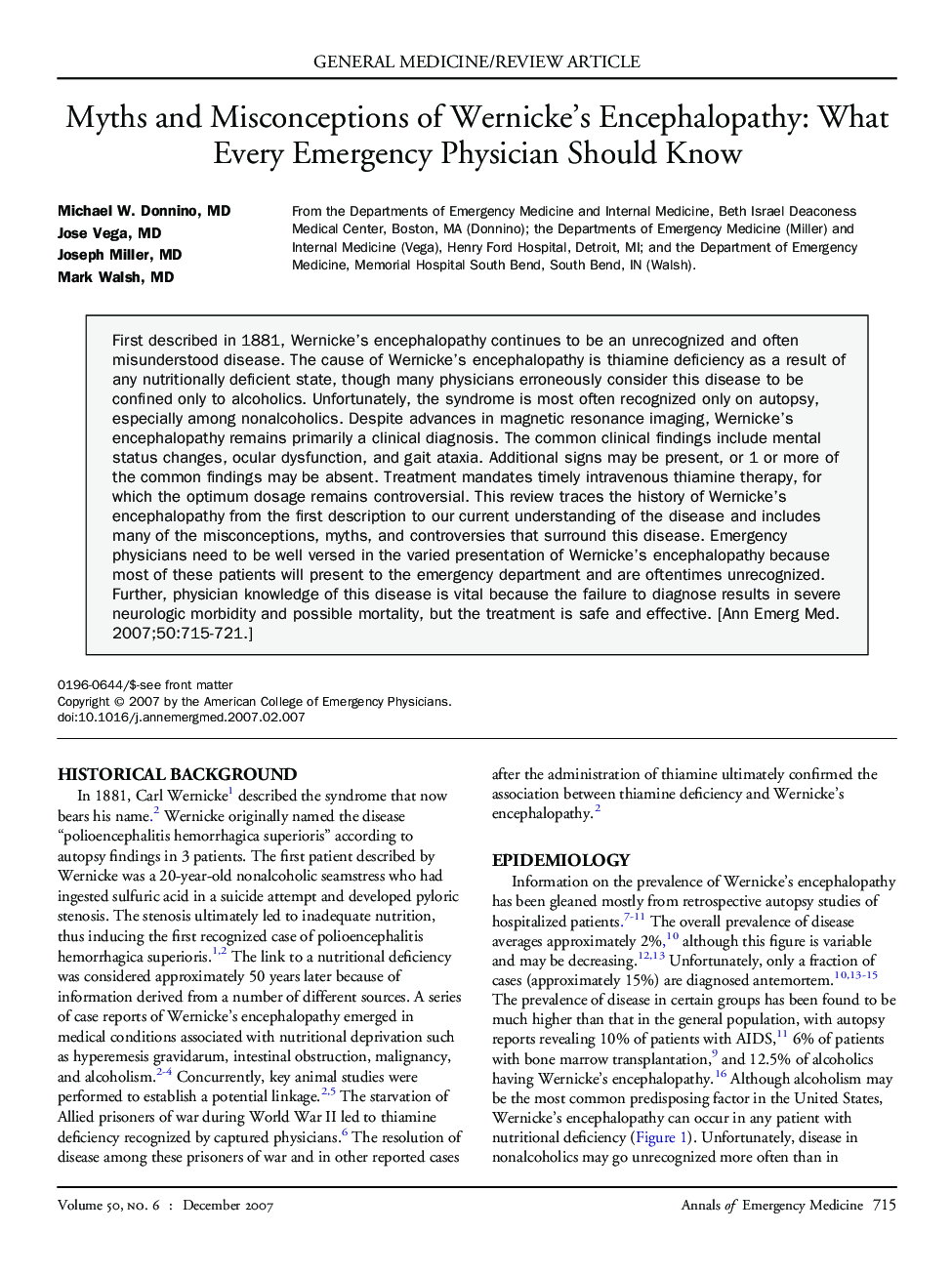| Article ID | Journal | Published Year | Pages | File Type |
|---|---|---|---|---|
| 3233181 | Annals of Emergency Medicine | 2007 | 7 Pages |
First described in 1881, Wernicke’s encephalopathy continues to be an unrecognized and often misunderstood disease. The cause of Wernicke’s encephalopathy is thiamine deficiency as a result of any nutritionally deficient state, though many physicians erroneously consider this disease to be confined only to alcoholics. Unfortunately, the syndrome is most often recognized only on autopsy, especially among nonalcoholics. Despite advances in magnetic resonance imaging, Wernicke’s encephalopathy remains primarily a clinical diagnosis. The common clinical findings include mental status changes, ocular dysfunction, and gait ataxia. Additional signs may be present, or 1 or more of the common findings may be absent. Treatment mandates timely intravenous thiamine therapy, for which the optimum dosage remains controversial. This review traces the history of Wernicke’s encephalopathy from the first description to our current understanding of the disease and includes many of the misconceptions, myths, and controversies that surround this disease. Emergency physicians need to be well versed in the varied presentation of Wernicke’s encephalopathy because most of these patients will present to the emergency department and are oftentimes unrecognized. Further, physician knowledge of this disease is vital because the failure to diagnose results in severe neurologic morbidity and possible mortality, but the treatment is safe and effective.
